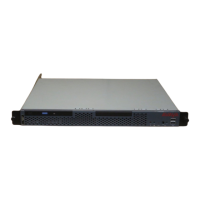Converting a processor port network to a port network
80 Migrating to the Avaya S8700 or S8710 Media Server
June 2004
Although the migrated translations are already copied to the S8700 or S8710 Media Server, this step is
important in case you need to back out of the migration.
1 Type save translations and press Enter to save translations to the system disk.
Either a “Command successfully completed” message displays or all error messages are logged.
Preconversion administration (S8100)
This section covers the following tasks:
• Connecting to the processor on page 80
• Note node names and IP addresses on page 80
• Saving translations on page 80
• Note IP settings on page 81
Connecting to the processor
NOTE:
You need a crossover cable to connect your services laptop directly to the processor.
1 Connect the services laptop directly into the Avaya IP600 processor circuit pack
• If a TN795 Processor circuit pack, place the NIC card into the slot on the faceplate.
• If a TN2314 Processor circuit pack, plug the RJ45 connector directly into the RJ45 jack on
the faceplate.
2 Start a terminal emulation application or Avaya Site Administration.
3 Log in as lucent3.
Note node names and IP addresses
Note the node names and IP addresses assigned to the TN2302AP IP Media Processor and TN799C/DP
C-LAN circuit packs. You want to make sure they are the same after the migration.
NOTE:
If the existing system has a TN799C C-LAN circuit pack, you’ll need to replace it with a
TN799DP circuit pack.
1 Type display ip-interfaces and press Enter to get the node names for the TN2302AP IP Media
Processor and TN799C/DP C-LAN circuit packs.
2 Type list node-names and press Enter to get the IP addresses that match the node names.
3 Write the information down for after the migration.
Saving translations
This step is important in case you need to back out of the migration. You may want to print out the
translations for reference.
1 Type save translations and press Enter to save translations to the system disk.
Either a “Command successfully completed” message displays or all error messages are logged.

